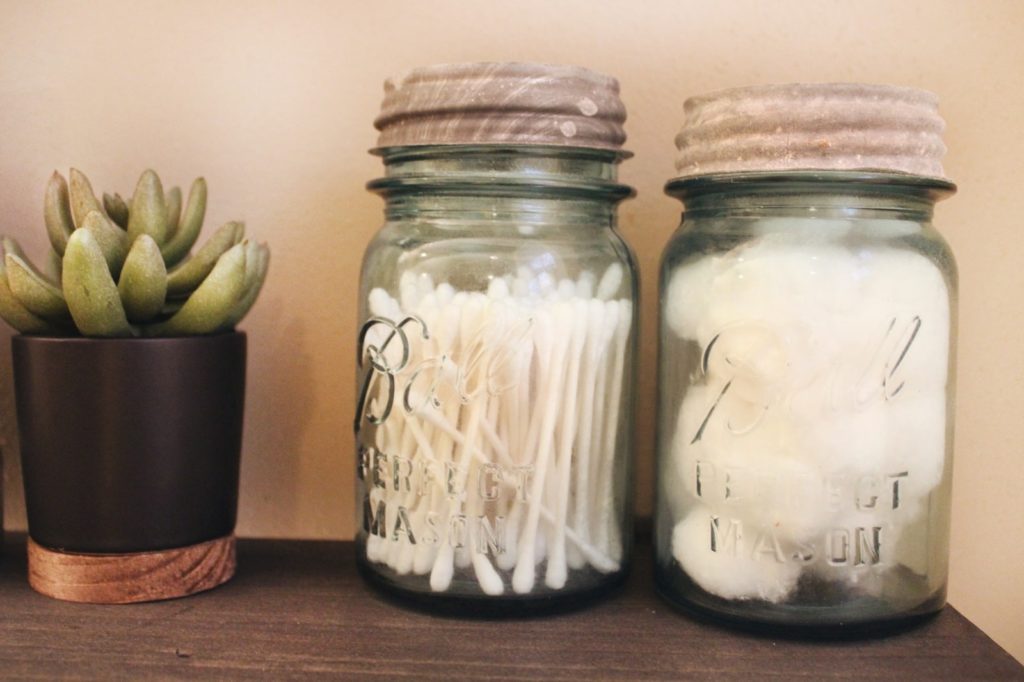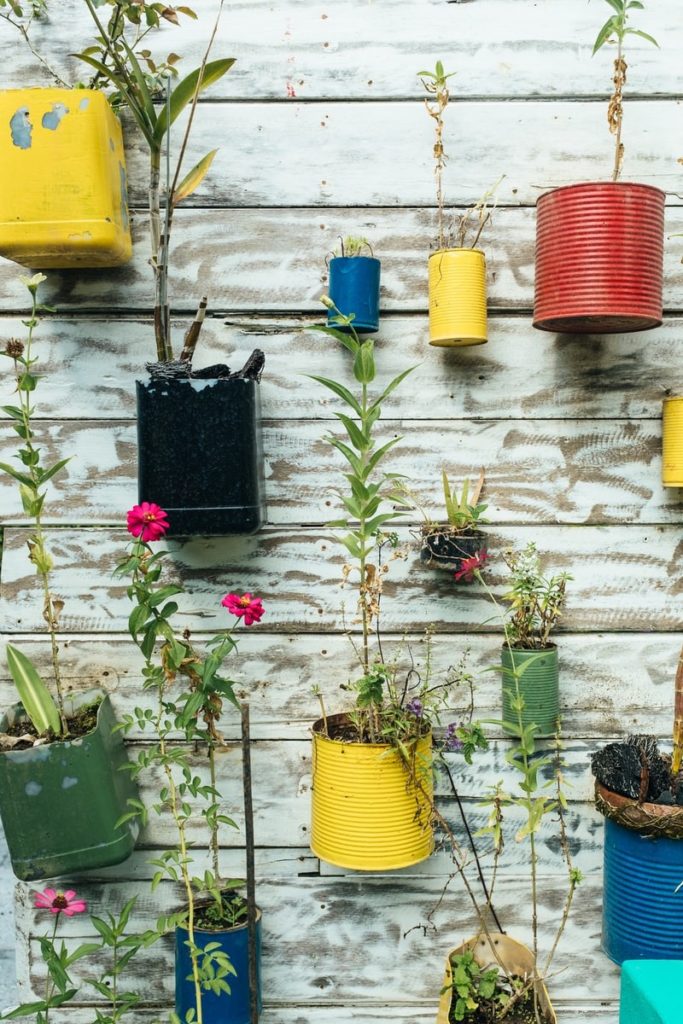Look no further, because the art of upcycling is here to save the day! Upcycling is the process of transforming old, worn-out items into something new and useful. It’s a creative and eco-friendly way to give new life to objects that would otherwise end up in landfills. Upcycling in this fast-paced world where consumerism is rampant allows us to challenge the throwaway culture and embrace sustainability. Upcycling offers endless possibilities for unleashing your creativity, from repurposing old furniture to creating unique home decor.
Understanding the Difference Between Upcycling and Recycling
Before we dive into the world of upcycling, it’s important to understand the difference between upcycling and recycling. While both practices aim to reduce waste and promote sustainability, there are key distinctions between the two. Recycling involves breaking down materials and turning them into new products. It requires energy and resources to transform the materials, and the result may not resemble the original item. On the other hand, upcycling involves repurposing items without breaking them down completely. The goal is to give new life to the object while preserving its original form and functionality. Upcycling allows us to tap into our creativity and transform old items into something unique and useful. By upcycling, we can reduce waste and make a positive impact on the environment.
Benefits of Upcycling
Upcycling offers a myriad of benefits, both for individuals and the environment. Firstly, upcycling helps reduce waste and lowers the demand for new products. By repurposing old items, we can decrease the amount of waste that ends up in landfills, reducing the environmental impact. Additionally, upcycling allows us to save money. Instead of purchasing new items, we can breathe new life into old ones, saving us from unnecessary expenses. Upcycling also encourages creativity and self-expression. It provides an opportunity to showcase our individuality and create unique pieces that reflect our style. Moreover, upcycling can be a rewarding and fulfilling hobby. It allows us to unleash our creativity, problem-solving skills, and resourcefulness. By upcycling, we can find joy in turning something old and forgotten into a beautiful and functional masterpiece.
Upcycling Ideas for Different Objects
When it comes to upcycling, the possibilities are endless. You can upcycle various objects, from furniture to clothing and glassware. Here are some ideas to inspire your next upcycling project:
Furniture
Old furniture pieces are perfect candidates for upcycling. With a little creativity and some basic tools, you can transform old chairs, tables, and dressers into stunning statement pieces. Consider giving a fresh coat of paint to an old wooden chair, reupholstering a worn-out sofa, or repurposing a dresser into a unique bathroom vanity. The key is to let your imagination run wild and think outside the box. Don’t be afraid to experiment with different colors, patterns, and textures to breathe new life into old furniture.
Clothing
Upcycling old or ill-fitting clothes is a fantastic way to avoid waste and create stylish and unique items. Transforming old jeans into trendy shorts, repurposing fabric scraps into a patchwork skirt, or even turning a t-shirt into a tote bag are just a few of the endless possibilities for upcycling clothing. This not only saves money by reducing unnecessary shopping trips but also adds one-of-a-kind pieces to your wardrobe that reflect your style.
Glassware
If you have a collection of old glass jars or bottles lying around, don’t throw them away just yet. Upcycling glassware is a great way to add a touch of creativity to your home decor. You can turn glass bottles into beautiful vases, transform mason jars into candle holders, or repurpose glass bowls into unique planters. With a little bit of paint, twine, or other decorative materials, you can breathe new life into old glassware and create stunning pieces that will impress your guests.
Essential Tools and Materials for Upcycling Projects
To embark on your upcycling journey, it’s important to have the right tools and materials on hand. Here are some essential items you’ll need for most upcycling projects:
Basic Tools
– Screwdriver: A versatile tool for disassembling and reassembling furniture or other objects.
– Paintbrushes: Different sizes for applying paint or other finishes.
– Sandpaper: To smooth rough surfaces or remove old finishes.
– Glue gun: Useful for attaching various materials.
– Sewing kit: Includes needles, thread, and scissors for upcycling clothing or fabric items.
– Measuring tape: Essential for accurate measurements and ensuring a proper fit.
Materials
– Paint: Choose a high-quality paint suitable for your upcycling surface. Consider eco-friendly options if available.
– Fabric: If you’re upcycling clothing or upholstery, you’ll need fabric for repairs, patches, or new designs.
– Decorative materials: This can include ribbons, buttons, beads, or any other embellishments you’d like to add to your upcycled items.
– Adhesive: Depending on your project, you may need glue, epoxy, or other adhesives to secure materials together.
– Finishes: Consider using varnish, wax, or other finishes to protect and enhance the appearance of your upcycled pieces.
Step-by-Step Guide to Upcycling a Piece of Furniture
Now that you have a basic understanding of upcycling and the necessary tools and materials, let’s dive into a step-by-step guide to upcycling a piece of furniture:
1. Choose your piece: Start by selecting a piece of furniture that you want to upcycle. Look for solid, well-built items that have good bones and potential.
2. Prepare the surface: Clean the furniture thoroughly and remove any hardware or accessories. Sand the surface to remove old finishes or rough spots.
3. Repair and reinforce: Check for any loose joints or damaged areas. Repair and reinforce as needed to ensure the structural integrity of the piece.
4. Design and plan: Decide on the design and style you want to achieve. Sketch out your ideas and gather inspiration from magazines or online sources.
5. Paint or refinish: Apply a fresh coat of paint or refinish the furniture to give it a new look. Consider using eco-friendly paints or stains if possible.
6. Add personal touches: Add decorative elements such as stencils, decals, or knobs to personalize your upcycled piece.
7. Protect and seal: Apply a protective finish to seal the paint or stain and ensure durability.
8. Reassemble and enjoy: Once the paint or finish is dry, reassemble the furniture and place it in its new spot. Admire your handiwork and enjoy your upcycled masterpiece!
Creative Upcycling Projects for Beginners
1. Corkboard: Repurpose an old frame and corkboard to create a stylish and functional memo board for your home office or kitchen.
2. Tin can planters: Transform empty tin cans into adorable planters for your indoor or outdoor plants. Paint them in vibrant colors for an extra pop of personality.
3. Pallet coffee table: Take a wooden pallet and turn it into a rustic coffee table by adding legs and a coat of paint or stain.
4. Mason jar soap dispenser: Convert a mason jar into a chic soap dispenser by attaching a pump lid and adding your favorite liquid soap.
5. Upcycled jewelry: Use old buttons, beads, or broken jewelry pieces to create unique and stylish accessories such as bracelets, necklaces, or earrings.
Upcycling Success Stories and Inspiration
To truly appreciate the art of upcycling, let’s explore some success stories and gain inspiration from those who have mastered the craft:
The Upcycled Chair
A worn-out chair found in a thrift store was transformed into a stunning statement piece with a fresh coat of paint and reupholstered seat. The chair now adds a pop of color and personality to the living room, proving that even the most neglected items can become treasures
The Dumpster Dive Dresser
A discarded dresser found by the side of the road was given a new lease on life. After some repairs, a fresh coat of paint, and new hardware, the dresser became a beautiful addition to a bedroom, showcasing the power of upcycling in turning trash into treasure.
The Glass Jar Chandelier
Empty glass jars were upcycled into a breathtaking chandelier. With the addition of fairy lights and a bit of creativity, the jars now illuminate a dining room, creating a whimsical and enchanting atmosphere.
These success stories remind us that with a little imagination and some elbow grease, we can transform ordinary objects into extraordinary pieces that bring joy and beauty to our lives.
Tips for Selling Upcycled Products
1. Quality is key: Ensure that your upcycled items are of high quality and built to last. Customers are more likely to invest in products that are well-made and durable.
2. Tell the story: Share the story behind each upcycled piece. Highlight the materials used, the process of transformation, and the unique features that make it special.
3. Professional presentation: Take clear and well-lit photographs of your upcycled products. Present them professionally and appealingly to attract potential buyers.
4. Market strategically: Utilize social media platforms, online marketplaces, and local craft fairs to promote and sell your upcycled products. Target your marketing efforts towards eco-conscious individuals or those who appreciate unique, handmade items.
5. Educate and inspire: Provide tutorials, tips, and inspiration on your blog or social media channels. Share your knowledge and encourage others to embrace upcycling in their own lives.
Conclusion: Embracing the Art of Upcycling
Living in a world where resources are limited and waste is abundant, upcycling is a sustainable and creative solution. It challenges the throwaway culture by giving old objects new life. Through upcycling, we can save money, reduce waste and unleash our creativity. Join the upcycling community and start creating unique items by repurposing furniture, transforming clothes, or upcycling glassware. Endless possibilities await!


